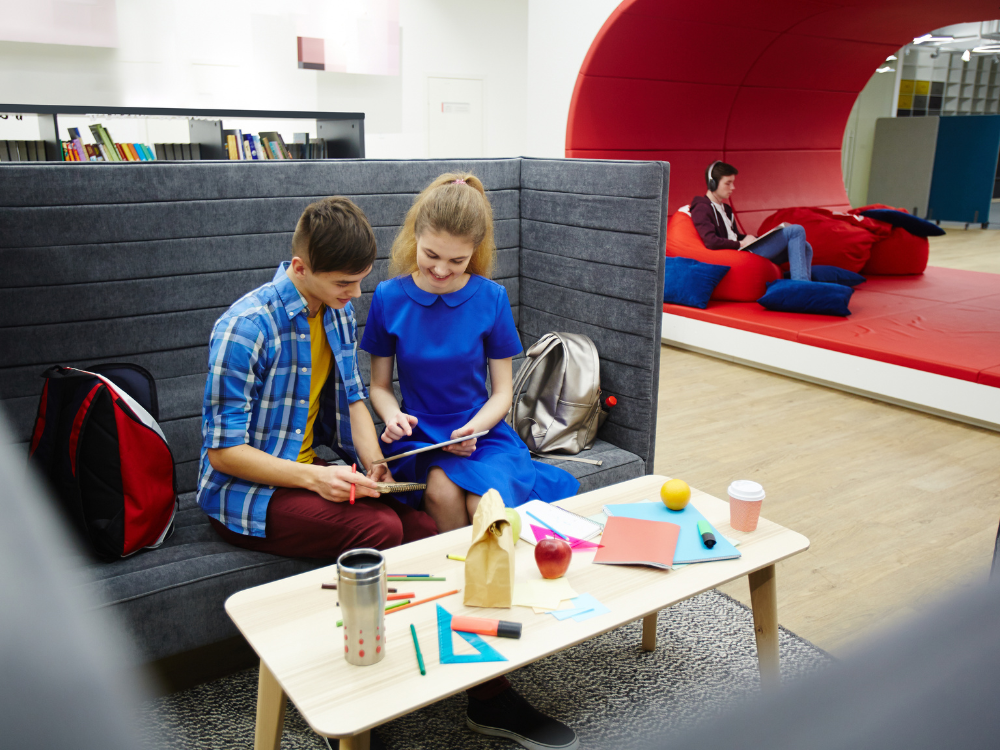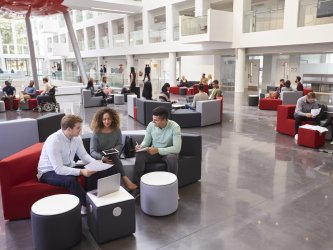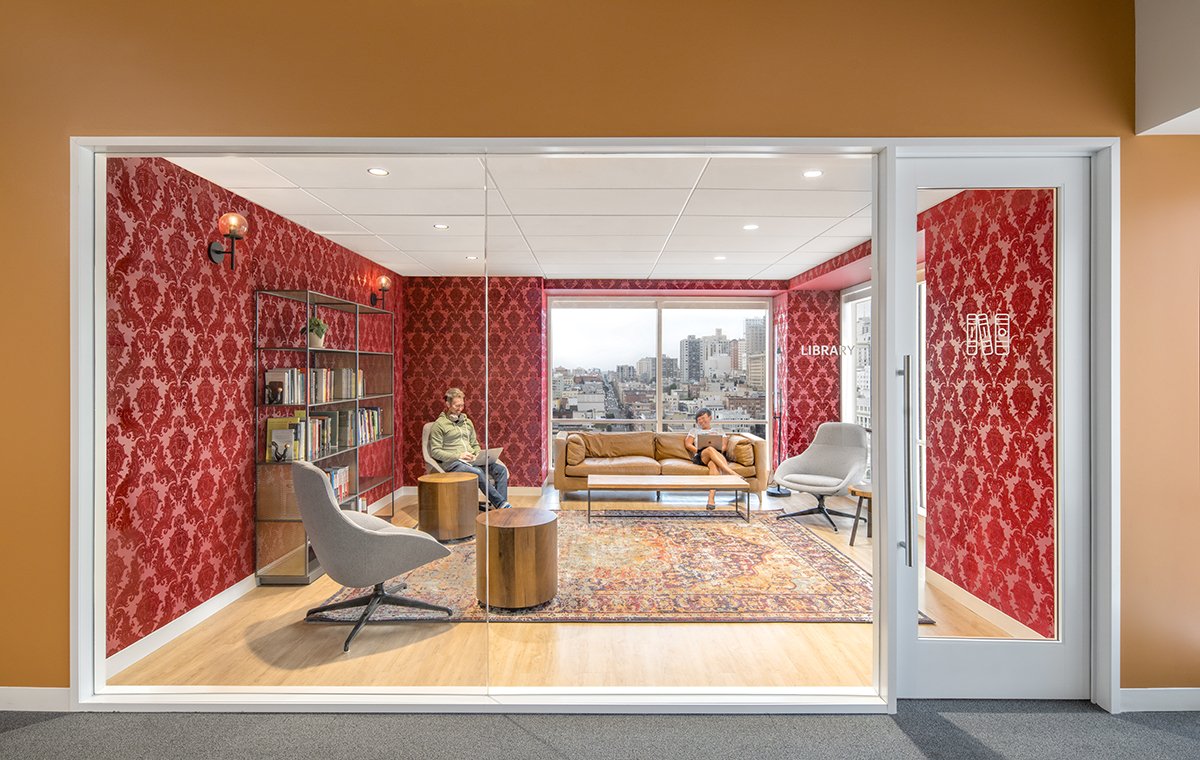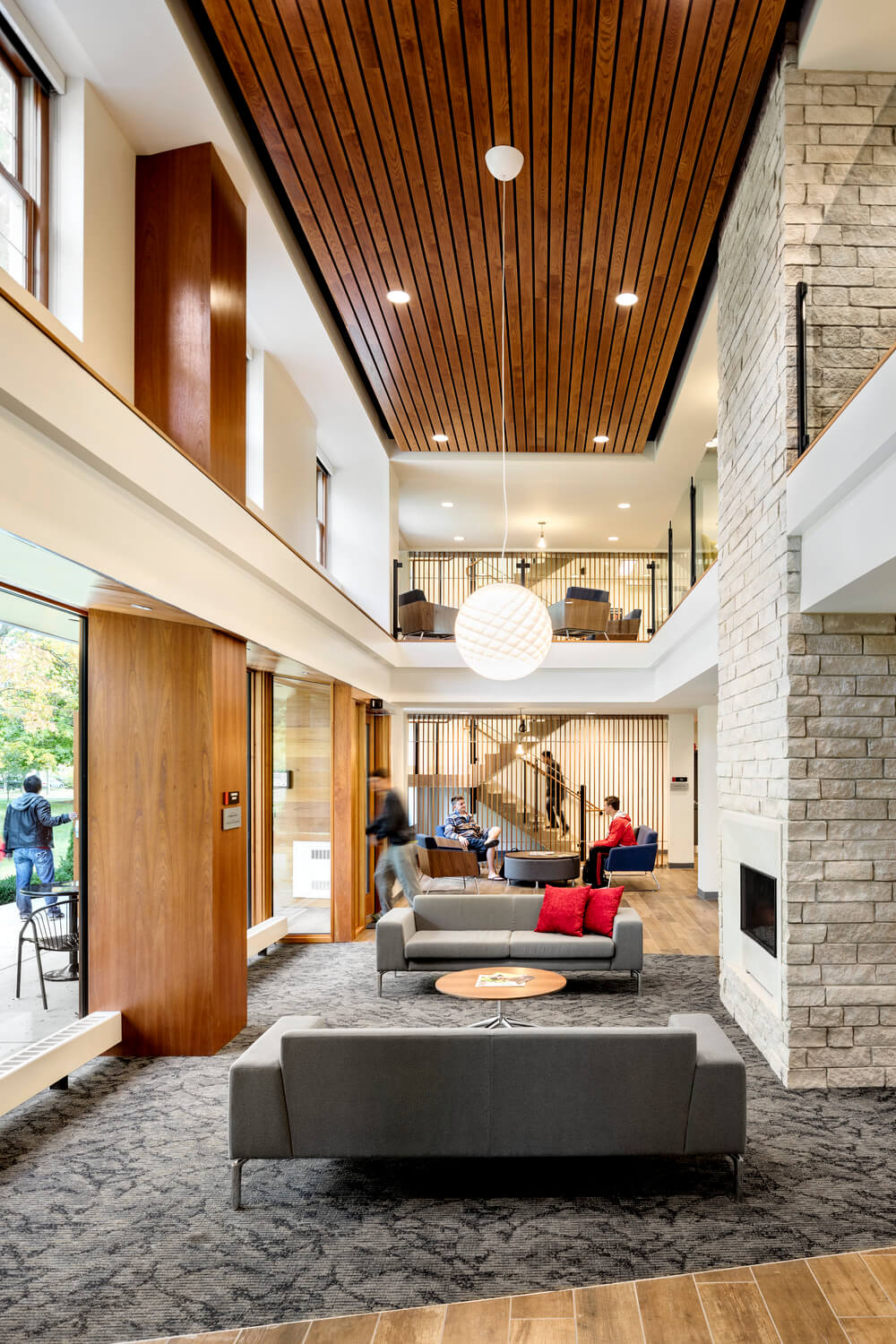
With more students heading back to physical school locations, designers must take another look at whether the environments they are designing are enough to attract and retain students.
Many students were forced to learn from the comfort of their own homes for months or even years. And with this came the challenge of decreased productivity and motivation. However, students discovered that there are benefits to working from home, comfort being a major benefit. At home, students had the opportunity to sit how and where they were most comfortable.
Being at home had many drawbacks, however, and because of this education facilities are seeking to bring back the connectivity and atmosphere of having students together again.
This raises the question: Why not intertwine the benefits of working from home in the designs of our current educational environments? This means incorporating the idea of academic common spaces.

Academic common spaces can be categorized into two different areas.
Common Areas. Large common areas sometimes referred to as learning centers, can act as large communal living spaces. These areas provide a variety of seating to accommodate all learners. Here you will often find booth-style seating, smaller nooks for meetings between peers, couches, collaborative tables and a variety of plants and acoustics included to dampen the noise.


This space is a hub where the ideas of tomorrow are formed and discussed—accommodating all learners, with a variety of areas to suit each need.
The second area is the smaller academic common rooms. These have the look and feel of a typical living room. These areas are smaller, cozy, and have space to focus on the task at hand or catch up on the novel being studied in English class. Multiple spaces like this are essential in each building to ensure students who require quieter spaces to focus are accommodated.
 Photo Courtesy of Parterre
Photo Courtesy of Parterre
Comfort is very important. Physical ease can lead to ease of the mind, letting students be more motivated to come to school and learn successfully. Spaces like the aforementioned areas spark creativity and innovation, which fosters the needs of the future.
 Photo Courtesy of Jeremy Bittermann
Photo Courtesy of Jeremy Bittermann
Create an academic living space in your educational facility today. Reach out today - we’d love to be a part of this design!
References:
FitzGerald, R. (n.d.). Look Out for These 9 Education Design Trends in 2022. https://www.parterreflooring.com/educational-design-trends/
comments powered by Disqus

